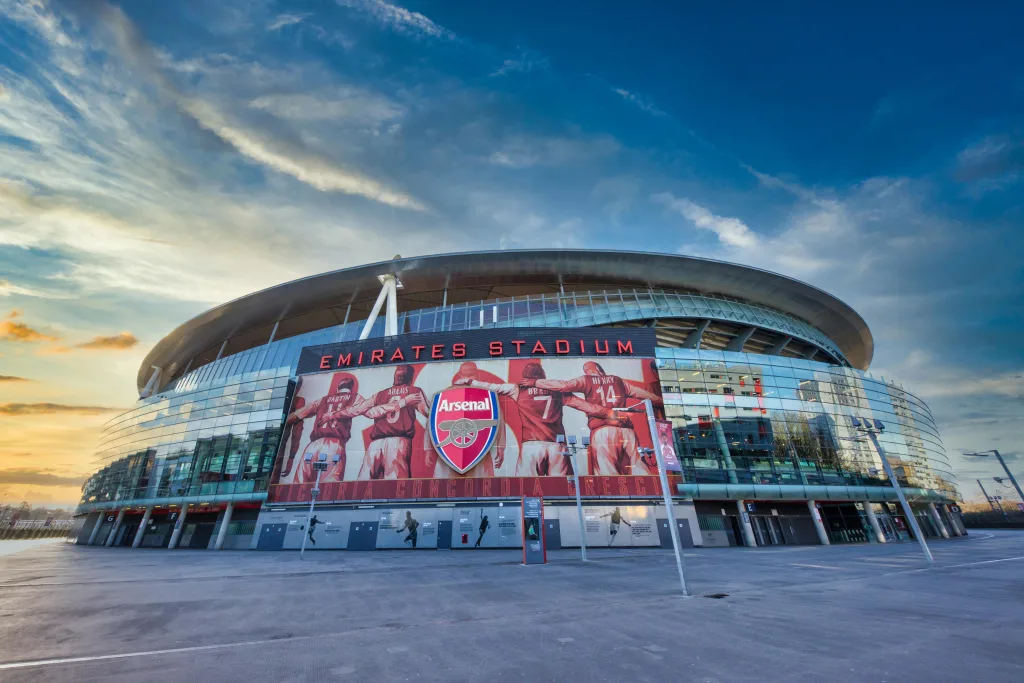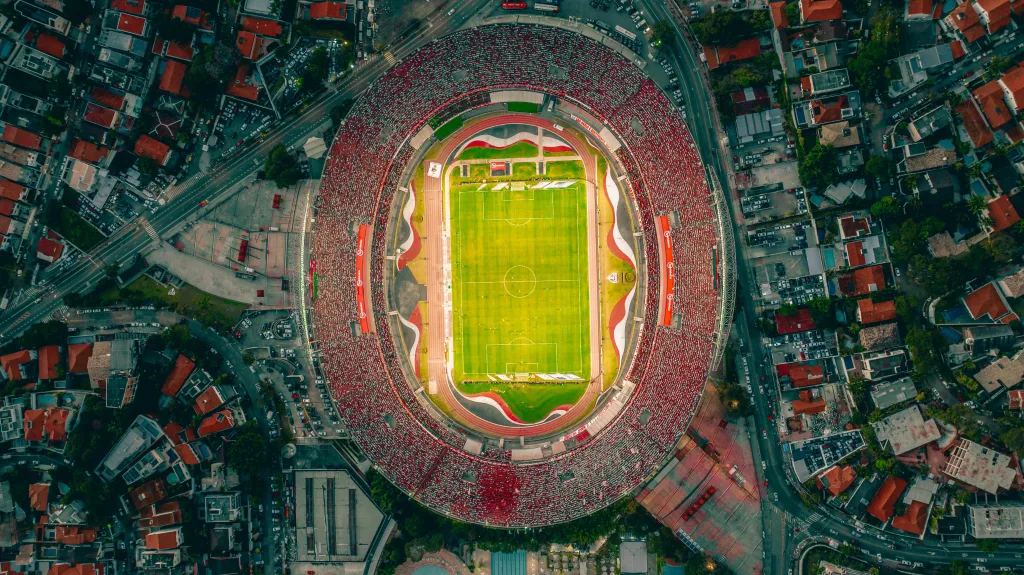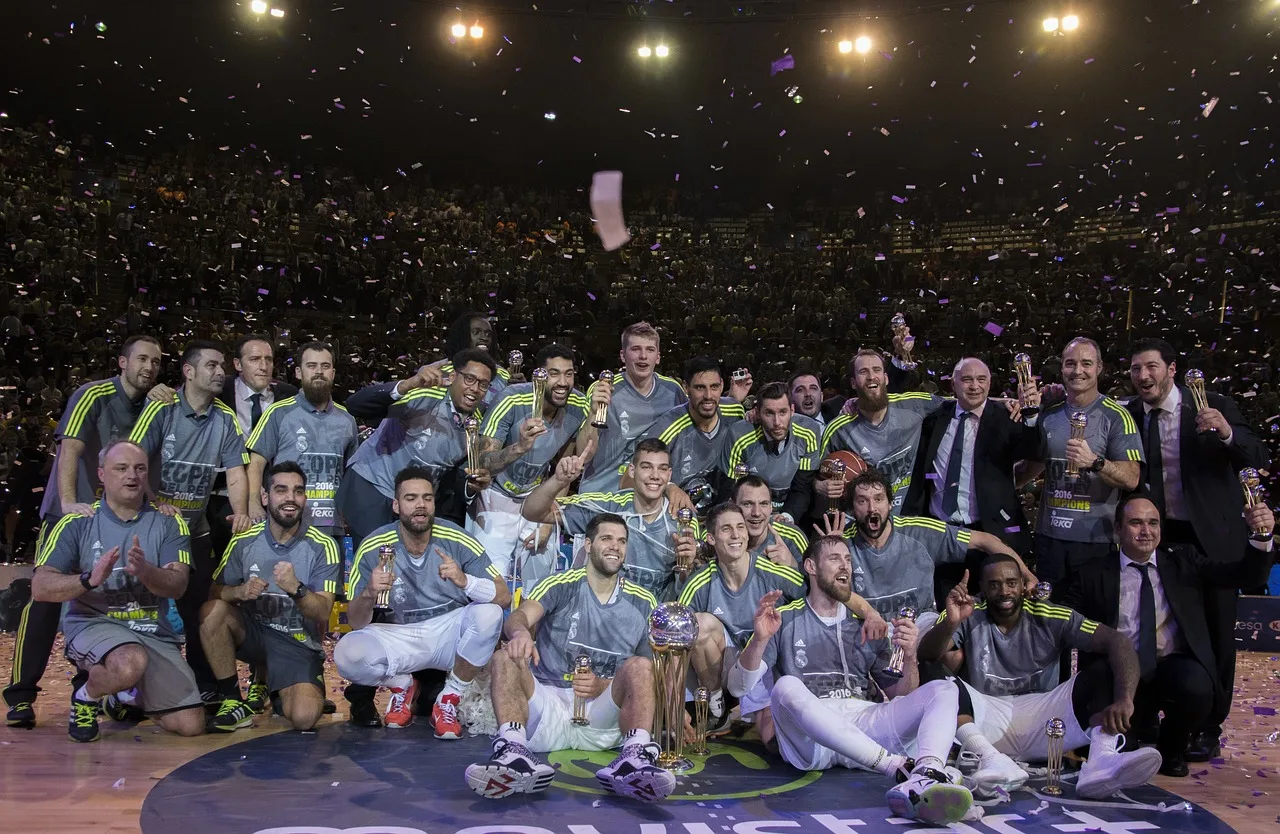Football fans, prepare yourselves for an unparalleled spectacle! The FIFA Club World Cup 2025 is all set to transform the global football stage, with the United States proudly hosting this extraordinary event. Marking its 21st edition, the tournament makes history with a thrilling new 32-team format designed to elevate the excitement and competition.
The decision to bring this grand event to the United States adds another layer of significance, as it serves as a crucial prelude to the much-awaited 2026 FIFA World Cup, also to be hosted across North America.1 This tournament will not only showcase the pinnacle of club football but also provide a fantastic opportunity to further ignite the passion for the sport in the host nation. Consider this your comprehensive roadmap to the FIFA Club World Cup 2025, providing all the essential information you need to follow this thrilling competition from start to finish.
Mark Your Calendars: Dates and Locations Revealed
Football fans should mark their calendars, as the FIFA Club World Cup 2025 will take place from June 14 to July 13, 2025.1 This nearly month-long festival of football will unfold across various stages, starting with the group phase from June 14 to June 26.3 The intensity will then escalate with the Round of 16 matches scheduled between June 28 and July 1.3 The quarter-finals will follow on July 4 and 5, setting the stage for the semi-finals on July 8 and 9.3 The grand finale, where the champion will be crowned, is set for July 13.3 This detailed schedule allows fans to plan their viewing and look forward to key matchdays.
The tournament will be hosted across 12 vibrant cities in the United States, each boasting world-class stadiums ready to welcome the global football fraternity.1 These locations span the breadth of the country, highlighting the widespread appeal of football in the USA. Here’s a look at the host cities and their respective stadiums:
- Atlanta, GA: Mercedes-Benz Stadium, a state-of-the-art venue known for its retractable roof and home to Atlanta United FC (MLS) and the Atlanta Falcons (NFL).3 A notable fixture here is Chelsea against Club Leon
- Cincinnati, OH: TQL Stadium, a modern stadium that serves as the home of FC Cincinnati.7 This venue will host a key match between Bayern Munich and Auckland City FC.7
- Charlotte, NC: Bank of America Stadium, home to Charlotte FC (MLS) and the Carolina Panthers (NFL).7 A highly anticipated game here features Real Madrid CF against CF Pachuca.7 This stadium will also host Round of 16 matches.6
- Los Angeles, CA: Rose Bowl Stadium, an iconic venue with a rich history, having hosted the 1994 FIFA World Cup Final and the 1999 FIFA Women’s World Cup Final.7 A standout fixture is Paris Saint-Germain versus Atletico Madrid.7
- Miami, FL: Hard Rock Stadium, a versatile venue that hosts major sporting events, including NFL games and international soccer matches.7 This stadium will have the honor of hosting the opening match between Inter Miami CF and Al Ahly FC 4 and will also host Round of 16 matches.6
- Nashville, TN: GEODIS Park, the largest soccer-specific stadium in the United States and home to Nashville SC (MLS).7 A notable match here is Auckland City against CA Boca Juniors.7
- New York/New Jersey: MetLife Stadium, a massive stadium in the New York/New Jersey metropolitan area, home to the New York Giants and New York Jets (NFL).3 This prestigious venue will host the tournament final and the semi-finals.3
- Orlando, FL: Camping World Stadium, a multi-purpose stadium known for hosting various high-profile sporting events.7 A key fixture here is Juventus against Manchester City.3 This stadium will also host Round of 16 and Quarter-final matches.6
- Orlando, FL: Inter&Co Stadium, a soccer-specific stadium and home to Orlando City SC (MLS).5 A notable match features Flamengo versus Al Ahly.5
- Philadelphia, PA: Lincoln Financial Field, home of the Philadelphia Eagles (NFL) and host to U.S. Men’s and Women’s National Team matches.3 A key fixture is Manchester City against Wydad AC.3 This stadium will also host Round of 16 and Quarter-final matches.6
- Seattle, WA: Lumen Field, a recognizable stadium known for its atmosphere and home to Seattle Sounders FC (MLS) and the Seattle Seahawks (NFL).3 A notable match features Sounders FC against Botafogo.3
- Washington, D.C.: Audi Field, a modern stadium and home to D.C. United (MLS).7 A key fixture here is Al Ain FC against Juventus.7
The selection of these diverse locations underscores the growing popularity of football across the United States. Each city offers a unique cultural backdrop and a passionate fanbase, promising an electrifying atmosphere for the visiting teams and fans alike. The geographical spread of the host cities also allows for broader engagement with the tournament, making it a truly nationwide event.
The Road to Glory: Meet the Participating Teams

The FIFA Club World Cup 2025 will bring together 32 elite clubs from across the globe, representing the six continental confederations.1 This expanded format ensures a diverse and highly competitive field. Here are the qualified teams categorized by their confederations:
- AFC (Asia): Four slots are allocated to Asia. Al Hilal from Saudi Arabia qualified as the winners of the 2021 AFC Champions League.1 Urawa Red Diamonds of Japan secured their spot by winning the 2022 AFC Champions League.1 Al Ain from the UAE triumphed in the 2023-24 AFC Champions League.1 The final AFC representative is Ulsan HD from South Korea, who qualified as the best-ranked eligible team in the AFC 4-year ranking.1
- CAF (Africa): Africa also has four representatives. Al Ahly of Egypt, a dominant force in African club football, qualified as winners of the 2020-21, 2022-23, and 2023-24 CAF Champions League.1 Wydad AC of Morocco secured their place by winning the 2021-22 CAF Champions League.1 Espérance de Tunis from Tunisia qualified as the best-ranked eligible team in the CAF 4-year ranking.1 Mamelodi Sundowns of South Africa claimed the final spot as the second-best ranked eligible team in the CAF 4-year ranking.1 Al Ahly’s repeated qualification as CAF Champions League winners highlights their consistent dominance in African club competitions.
- CONCACAF (North and Central America, Caribbean): CONCACAF is represented by four teams. Monterrey of Mexico qualified as the winners of the 2021 CONCACAF Champions League.1 Seattle Sounders FC from the USA secured their spot by winning the 2022 CONCACAF Champions League.1 Pachuca of Mexico won the 2024 CONCACAF Champions Cup to qualify.1 Inter Miami CF from the USA, featuring Lionel Messi, will also participate as the host nation representative.4 Inter Miami’s qualification as the host nation, especially with Messi in their ranks, is expected to generate significant fan interest and excitement.
- CONMEBOL (South America): South America boasts six slots. Palmeiras of Brazil qualified as the winners of the 2021 Copa Libertadores.1 Flamengo, also from Brazil, secured their place by winning the 2022 Copa Libertadores.1 Fluminense of Brazil triumphed in the 2023 Copa Libertadores.1 Botafogo of Brazil will participate as the winners of the 2024 Copa Libertadores.1 River Plate of Argentina qualified as the best-ranked eligible team in the CONMEBOL 4-year ranking.1 Boca Juniors, another Argentine powerhouse, secured the final spot as the second-best ranked eligible team in the CONMEBOL 4-year ranking.1 The strong representation from Brazil in CONMEBOL reflects the current strength and depth of club football in the country.
- OFC (Oceania): Oceania has one representative, Auckland City of New Zealand, who qualified as the best OFC Champions League winner in the OFC 4-year ranking.1
- UEFA (Europe): UEFA, with the most slots (12), showcases the depth of European club football. Chelsea of England qualified as the winners of the 2020-21 UEFA Champions League.1 Real Madrid of Spain secured their spot by winning both the 2021-22 and 2023-24 UEFA Champions League.1 Manchester City of England qualified as the winners of the 2022-23 UEFA Champions League.1 Bayern Munich of Germany qualified as the best-ranked eligible team in the UEFA 4-year ranking.1 Paris Saint-Germain of France secured their place as the second-best ranked eligible team.1 Inter Milan of Italy qualified as the fourth-best ranked eligible team.1 Borussia Dortmund of Germany, FC Porto and SL Benfica of Portugal, Juventus of Italy, Atlético de Madrid of Spain, and FC Salzburg of Austria complete the UEFA contingent.8 UEFA’s significant number of slots underscores Europe’s dominant position in global club football, reflecting the high level of competition in the UEFA Champions League and the strength of its domestic leagues.
This impressive lineup of teams promises a tournament filled with high-quality football and intense competition. Fans can look forward to seeing some of the biggest names in the sport compete for the coveted FIFA Club World Cup trophy.
Anticipating the Action: Key Storylines and Potential Rivalries
The FIFA Club World Cup 2025 is ripe with potential storylines and tantalizing rivalries that are sure to captivate football fans worldwide. The prospect of clashes between European giants such as Real Madrid, Manchester City, Bayern Munich, and Paris Saint-Germain is particularly exciting. Matches involving these teams are always highly anticipated due to their history of success and the star power within their squads.
Furthermore, the potential for showdowns between South American powerhouses like Palmeiras, Flamengo, River Plate, and Boca Juniors against their European counterparts adds another layer of intrigue. These inter-confederation matches serve as a crucial test of strength between different footballing regions and are a major draw of the Club World Cup. The chance to see how teams from South America, known for their passionate style of play, fare against the tactical prowess of European clubs will be a key narrative throughout the tournament.
Beyond the traditional powerhouses, there are also intriguing rivalries within confederations to watch out for. For instance, a potential clash between African giants Al Ahly and Wydad AC would be a highly charged affair, given their history of competitive matches in the CAF Champions League. Similarly, a matchup between Mexican rivals Monterrey and Pachuca from CONCACAF could provide a fiery encounter.
Several compelling storylines also surround specific teams and players. The presence of Lionel Messi playing on home soil with Inter Miami CF is undoubtedly one of the biggest narratives of the tournament. His participation will likely attract a massive global audience and add an extra layer of excitement for fans in the United States. Additionally, the tournament offers a platform for teams outside of Europe and South America to prove their mettle and potentially cause major upsets against the established favorites. Every participating team will be aiming to etch their name in history and establish themselves as the best club in the world.
Considering the current form and historical success of the participating clubs, teams like Real Madrid and Manchester City will likely be considered among the frontrunners. However, the beauty of tournament football lies in the potential for underdogs to emerge and surprise everyone with strong performances. Teams like Al Ahly or even Auckland City could become the surprise packages of the competition, adding an unpredictable element to the proceedings. For insights into cricket, check out our analysis Is India Destined to Win the Champions Trophy? Astrology Predicts a Stunning Victory.
Decoding the Tournament: Format and Rules Explained

The FIFA Club World Cup 2025 introduces a new and expanded format featuring 32 teams, a significant change from previous editions.1 These 32 teams are divided into eight groups of four. Within each group, teams will compete in a single round-robin format, meaning each team will play three matches against the other teams in their group.
Following the group stage, the top two teams from each of the eight groups will advance to the Round of 16. This marks the beginning of the knockout phase of the tournament. From the Round of 16 onwards, the competition follows a single-match knockout format. If a match in the knockout stages ends in a draw after regular time, extra time will be played. If the score remains level after extra time, the winner will be decided by a penalty shootout. It’s important to note that there will be no third-place play-off in this edition of the tournament. This absence underscores the significance of each knockout match, as teams will be solely focused on progressing to the final.
A Look Back: History of the FIFA Club World Cup
The FIFA Club World Cup has a rich history, evolving from its predecessor, the Intercontinental Cup, which pitted the champions of Europe and South America against each other. The FIFA Club World Cup, in its current form, was first held in 2000, aiming to bring together the champions from all six FIFA confederations to determine the undisputed club world champion. Over the years, the tournament format has seen some adjustments, but the core principle of showcasing the best club teams from around the globe has remained constant. The 2025 edition marks a significant milestone with its expansion to 32 teams, reflecting FIFA’s ambition to make the competition more inclusive and representative of the global football landscape.
Historically, the FIFA Club World Cup has been dominated by teams from Europe and South America. European clubs have generally held the upper hand in recent years, showcasing the strength of their domestic leagues and the UEFA Champions League. However, teams from other confederations have also had their moments, with some even reaching the final and providing memorable challenges to the established giants.
Throughout its history, the tournament has witnessed numerous memorable moments and iconic matches. Upsets, thrilling finishes, and standout performances from individual players have all contributed to the rich tapestry of the FIFA Club World Cup. The expanded 2025 edition promises to add many more chapters to this history, with the increased number of participating teams potentially leading to more surprises and exciting encounters.
| Year | Host Country | Winner | Confederation | Runner-up | Confederation |
| 2000 | Brazil | Corinthians | CONMEBOL | Vasco da Gama | CONMEBOL |
| 2005 | Japan | São Paulo | CONMEBOL | Liverpool | UEFA |
| 2006 | Japan | Internacional | CONMEBOL | FC Barcelona | UEFA |
| 2007 | Japan | AC Milan | UEFA | Boca Juniors | CONMEBOL |
| 2008 | Japan | Manchester Utd | UEFA | LDU Quito | CONMEBOL |
| 2009 | UAE | FC Barcelona | UEFA | Estudiantes | CONMEBOL |
| 2010 | UAE | Inter Milan | UEFA | TP Mazembe | CAF |
| 2011 | Japan | FC Barcelona | UEFA | Santos | CONMEBOL |
| 2012 | Japan | Corinthians | CONMEBOL | Chelsea | UEFA |
| 2013 | Morocco | Bayern Munich | UEFA | Raja Casablanca | CAF |
| 2014 | Morocco | Real Madrid | UEFA | San Lorenzo | CONMEBOL |
| 2015 | Japan | FC Barcelona | UEFA | River Plate | CONMEBOL |
| 2016 | Japan | Real Madrid | UEFA | Kashima Antlers | AFC |
| 2017 | UAE | Real Madrid | UEFA | Grêmio | CONMEBOL |
| 2018 | UAE | Real Madrid | UEFA | Al Ain | AFC |
| 2019 | Qatar | Liverpool | UEFA | Flamengo | CONMEBOL |
| 2020 | Qatar | Bayern Munich | UEFA | Tigres UANL | CONCACAF |
| 2021 | UAE | Chelsea | UEFA | Palmeiras | CONMEBOL |
| 2022 | Morocco | Real Madrid | UEFA | Al Hilal | AFC |
| 2023 | Saudi Arabia | Manchester City | UEFA | Fluminense | CONMEBOL |
Table 1: Past FIFA Club World Cup Winners
This historical overview highlights the dominance of European and South American teams in the FIFA Club World Cup. While teams from other confederations have made strides, the ultimate prize has largely remained within these two footballing powerhouses. The 2025 edition presents a fresh opportunity for teams from across the globe to challenge this established order.
Beyond the Game: Economic and Social Impact on the USA

Hosting the FIFA Club World Cup 2025 is expected to bring significant economic benefits to the United States. The tournament will attract a large influx of international tourists, leading to increased spending in the host cities on accommodation, food, transportation, and entertainment. This surge in tourism will provide a boost to local businesses and create numerous job opportunities in various sectors, including hospitality, retail, and event management. Furthermore, the event could spur infrastructure development and upgrades in the host cities, leaving a lasting positive impact beyond the tournament itself.
Beyond the economic advantages, the FIFA Club World Cup 2025 holds considerable social and cultural significance for the United States. Hosting such a prestigious global football event will undoubtedly raise the profile of soccer in the country, further fueling the growing interest in the sport. It provides a unique opportunity to bring together diverse cultures through a shared love of football, fostering a sense of global community. Moreover, this tournament serves as an important milestone in the lead-up to the 2026 FIFA World Cup, providing valuable experience in hosting large-scale international football events and building excitement for the even bigger tournament on the horizon. The event can capitalize on the increasing popularity of soccer in the US and leave a lasting legacy for the sport’s development in the nation.
Predicting the Future: Favorites and Underdogs – Expert Opinions
Predicting the winner of a tournament with such a high caliber of teams is always a challenging task, but based on current form and historical performance, several teams stand out as potential favorites for the FIFA Club World Cup 2025. European giants like Real Madrid and Manchester City, with their consistent success in domestic and continental competitions, will likely be considered strong contenders. Bayern Munich and Paris Saint-Germain also possess the quality and experience to go deep in the tournament.
From South America, the Brazilian contingent, including Palmeiras, Flamengo, and Fluminense, will be aiming to challenge the European dominance. River Plate and Boca Juniors from Argentina also have a rich history in international club football and could pose a threat. Experts often point to the tactical discipline and individual brilliance within these squads as key factors in their potential success.
While the traditional powerhouses are expected to be in the mix, the expanded format could also pave the way for some underdogs to make a significant impact. Teams like Al Ahly from Africa or even Auckland City from Oceania might surprise a few with their determination and tactical organization. The tournament provides a platform for these teams to test themselves against the very best in the world and potentially cause an upset or two. Ultimately, the FIFA Club World Cup 2025 promises to be a thrilling competition with plenty of twists and turns, and the eventual winner will have truly earned the title of the best club in the world.
Conclusion: Get Ready for the FIFA Club World Cup 2025!
The FIFA Club World Cup 2025 is shaping up to be an unforgettable event, marking a new era for global club football with its expanded 32-team format. From June 14 to July 13, 2025, the United States will play host to the world’s best club teams, showcasing thrilling matches across 12 vibrant cities. With a diverse lineup of participating teams from all corners of the globe, including European giants, South American powerhouses, and ambitious contenders from other confederations, the tournament promises intense competition and captivating storylines.
The economic and social impact of hosting this prestigious event will be significant for the USA, further boosting the popularity of soccer in the nation as it gears up for the 2026 FIFA World Cup. As football fans eagerly await the start of the tournament, the anticipation for potential rivalries, surprising upsets, and unforgettable moments continues to build.
Now, we want to hear from you! Which teams are you most excited to watch? Who do you think will lift the FIFA Club World Cup trophy in 2025? Share your predictions and expectations in the comments section below! And don’t forget to visit kalikablogs.com for more sports news and updates as we count down to this global football spectacle.
Works cited
- 2025 FIFA Club World Cup – Wikipedia, accessed April 2, 2025, https://en.wikipedia.org/wiki/2025_FIFA_Club_World_Cup
- en.wikipedia.org, accessed April 2, 2025, https://en.wikipedia.org/wiki/2025_FIFA_Club_World_Cup#:~:text=The%202025%20FIFA%20Club%20World,14%20to%20July%2013%2C%202025.
- FIFA Club World Cup 2025: Everything you need to know, accessed April 2, 2025, https://www.mancity.com/news/mens/fifa-club-world-cup-2025-explainer-63854648
- FIFA Club World Cup 2025 | Teams, dates and official information, accessed April 2, 2025, https://www.fifa.com/en/tournaments/mens/club-world-cup/usa-2025/articles/teams-dates-venue-groups-draw-matches-tickets
- FIFA Club World Cup 2025™ Match Schedule Released – Greater Orlando Sports, accessed April 2, 2025, https://greaterorlandosports.com/news/fifa-club-world-cup-2025-match-schedule-released/
- Club World Cup 2025 knockout stage match schedule – FIFA, accessed April 2, 2025, https://www.fifa.com/en/tournaments/mens/club-world-cup/usa-2025/articles/knockout-stage-bracket-play-offs-match-schedule
- Where is the 2025 FIFA Club World Cup Being Held? A Look at the …, accessed April 2, 2025, https://www.si.com/soccer/where-is-the-2025-fifa-club-world-cup-a-look-at-the-stadiums-and-host-cities
- FIFA Club World Cup 2025™ – USA Tour – Fanatics, accessed April 2, 2025, https://www.thefanatics.com/2025-club-world-cup/fifa-club-world-cup-2025-pre-reg
- Club World Cup 2025: Dates, teams qualified, venues, draw, format and schedule, accessed April 2, 2025, https://www.skysports.com/football/news/11095/13227203/club-world-cup-2025-dates-teams-qualified-venues-draw-format-and-schedule
FIFA Club World Cup 2025: Know the venues for the revamped men’s tournament in the USA – full list – Olympics.com, accessed April 2, 2025, https://www.olympics.com/en/news/fifa-club-world-cup-2025-stadiums-venues



